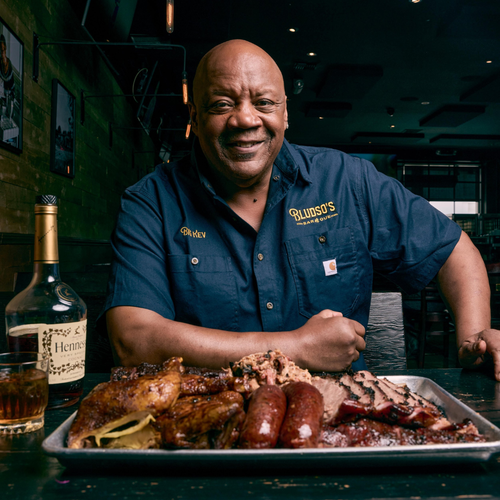
Grilling is one of the most beloved cooking techniques worldwide, offering a delicious way to prepare a variety of foods. While different cultures bring their unique flair to grilling, there are several iconic grilling recipes that have garnered global acclaim. Here’s a look at some world-famous grilling recipes, celebrating both the flavors and the methods that make them special.
American BBQ Ribs (USA)
American barbecue is synonymous with slow-cooked, flavorful meats, especially ribs. These pork or beef ribs are often marinated in a blend of spices, then slow-cooked on a grill or smoker for hours. The key to perfect American BBQ ribs is a balance between smokiness and the sweetness of the sauce, usually made with ingredients like tomato, brown sugar, molasses, and vinegar. Whether you prefer Kansas City-style with a thick, sweet sauce or Carolina-style with a tangy vinegar-based flavor, BBQ ribs are a staple of American grilling.
Churrasco (Brazil)
In Brazil, churrasco refers to a specific style of grilling beef, often served at traditional steakhouses called churrascarias. Large cuts of meat, like picanha (top sirloin), are seasoned simply with rock salt and grilled over an open flame. These meats are typically cooked on skewers and sliced directly onto diners’ plates. Brazilian grilling emphasizes the quality of the meat and simplicity of seasoning, allowing the natural flavors to shine through.
Satay (Indonesia/Malaysia)
Satay is a popular street food across Southeast Asia, especially in Indonesia and Malaysia. This dish involves marinated meat, usually chicken, beef, or lamb, skewered on sticks and grilled over charcoal. The secret to great satay lies in the marinade, which often includes ingredients like lemongrass, turmeric, garlic, and ginger. It is typically served with a rich, peanut-based dipping sauce, adding layers of sweet, salty, and spicy flavors.


Yakitori (Japan)
Yakitori is a Japanese grilling tradition where skewered chicken is grilled over hot coals. Each part of the chicken, from breast meat to liver, is seasoned either with a salty tare sauce or simply with salt. Yakitori stalls can be found throughout Japan, offering everything from classic cuts of chicken to more adventurous parts like chicken hearts. The smoky flavor from the charcoal and the perfect balance of seasoning make yakitori a beloved Japanese dish.
Tandoori Chicken (India)
Tandoori chicken is a famous Indian dish that is traditionally cooked in a tandoor, a cylindrical clay oven. Chicken is marinated in a mixture of yogurt and spices, including garam masala, cumin, coriander, and turmeric, then grilled at high heat. The intense heat of the tandoor imparts a smoky, charred flavor to the chicken, while the yogurt marinade keeps it tender and juicy. Tandoori chicken is often served with naan bread and a side of mint chutney.
Asado (Argentina)
Asado is more than just a dish in Argentina—it’s a social event. This grilling tradition involves cooking large cuts of beef, pork, and sausages over an open flame or a charcoal grill. The meat is often cooked slowly to achieve the perfect level of tenderness and is usually served with chimichurri sauce, a mixture of parsley, garlic, olive oil, and vinegar. Asado showcases the high-quality beef Argentina is known for and emphasizes communal dining and sharing.
Shish Kebab (Middle East)
Shish kebabs are a grilling staple across the Middle East, particularly in Turkey, Iran, and Lebanon. These skewers of marinated meat—often lamb or chicken—are grilled over an open flame. The meat is marinated with a combination of herbs, spices, and sometimes yogurt to enhance flavor and tenderness. Shish kebabs are often served with flatbreads, rice, or salads, making for a hearty and satisfying meal.


Jerk Chicken (Jamaica)
Jamaican jerk chicken is famous for its fiery, aromatic seasoning and smoky flavor. The chicken is marinated with a mix of Scotch bonnet peppers, allspice, thyme, garlic, and ginger, giving it a complex and spicy taste. It is then grilled over pimento wood, which adds a distinct smokiness. Jerk chicken is a must-try for anyone who loves bold, spicy flavors.
Korean BBQ (South Korea)
Korean BBQ, known as gogi-gui, is a popular dining experience where diners grill their own meat at the table. A variety of meats, including beef, pork, and chicken, are marinated in sauces such as bulgogi (sweet soy marinade) or galbi (savory-sweet marinade for short ribs). The meat is grilled on a tabletop grill and often wrapped in lettuce or perilla leaves with garlic, chili paste (gochujang), and other condiments. Korean BBQ emphasizes interactive, communal eating and is known for its bold, savory flavors.
Grilled Halloumi (Cyprus/Greece)
Halloumi, a semi-hard cheese from Cyprus, is unique in that it holds its shape when grilled, making it a popular choice for grilling in Mediterranean countries like Greece and Cyprus. The cheese is simply sliced and grilled until it develops a crispy, golden-brown exterior, while remaining soft and slightly chewy inside. Grilled halloumi is often served as an appetizer or side dish, paired with fresh vegetables, herbs, and olive oil for a light, flavorful dish.
Cochinita Pibil (Mexico)
Originating from the Yucatán Peninsula, cochinita pibil is a traditional Mexican dish where pork is marinated in citrus juice and achiote (annatto seed paste), then wrapped in banana leaves and slow-cooked, often underground. While traditionally a pit-roasted dish, modern versions are often prepared on the grill. The grilling process infuses the pork with smoky, earthy flavors, while the marinade gives it a zesty, vibrant taste. Served with pickled red onions and tortillas, cochinita pibil offers a unique combination of tangy, smoky, and spicy flavors.


Australian Grilled Prawns (“Shrimp on the Barbie”)
Australia is known for its seafood, and grilled prawns, or as Australians might say, “shrimp on the barbie,” are a favorite at summer gatherings. Large prawns are marinated in garlic, lemon, and olive oil, then grilled quickly over high heat. The result is a juicy, tender prawn with a slightly charred, smoky flavor. Grilled prawns are often served with a squeeze of fresh lemon and a side of salad, making for a light and flavorful meal perfect for outdoor dining.
Peri-Peri Chicken (Southern Africa)
Peri-peri chicken, with origins in Southern Africa and Portugal, is known for its spicy, tangy flavor. The chicken is marinated in a sauce made from peri-peri chilies (also known as bird’s eye chilies), garlic, lemon, and vinegar, then grilled until it’s perfectly charred. The heat from the chilies combined with the acidity of the lemon creates a bold and zesty flavor profile. This dish is particularly popular in Mozambique and South Africa, where it’s often enjoyed with rice or potatoes.
Souvlaki (Greece)
Souvlaki is a classic Greek street food that involves grilling skewers of marinated pork, chicken, or lamb. The marinade typically includes olive oil, lemon juice, oregano, and garlic, which infuse the meat with bright, Mediterranean flavors. Once grilled, souvlaki is usually served in a pita with tzatziki (a yogurt-cucumber sauce), fresh vegetables, and sometimes fries. This simple yet flavorful dish is a testament to the Greek tradition of grilling fresh, quality ingredients.
Grilled Corn (Mexico, India, Worldwide)
Grilled corn, known as elote in Mexico, is a popular street food across many cultures. In Mexico, the corn is typically grilled over an open flame until slightly charred, then slathered with mayonnaise, sprinkled with chili powder, and topped with lime juice and grated cheese. In India, street vendors often grill corn over hot coals and rub it with a mixture of salt, chili, and lime. Grilled corn is a universally loved snack, with each culture bringing its own spin to this simple yet delicious food.


South African Braai (South Africa)
In South Africa, the braai (Afrikaans for “barbecue”) is more than just a way of cooking—it’s a cultural institution. A braai typically involves grilling various meats such as lamb chops, boerewors (a traditional sausage), and steaks over wood or charcoal. What makes the braai unique is the emphasis on using wood fires rather than gas, which adds a rich, smoky flavor to the meats. Braais are social gatherings, often held outdoors, and serve as a time for family and friends to come together. The meal is usually accompanied by sides like pap (a maize porridge) and a variety of sauces.
Côte de Boeuf (France)
Côte de boeuf, or bone-in rib steak, is a favorite in French grilling culture. This thick, juicy cut of beef is seasoned with salt and pepper and grilled over high heat to achieve a perfect crust while maintaining a tender, juicy center. Often served rare to medium-rare, côte de boeuf is a luxurious and flavorful way to enjoy beef. It’s typically accompanied by sauces like béarnaise or a simple herb butter, along with roasted vegetables or potatoes.
Balinese Satay Lilit (Indonesia)
While satay is well-known throughout Indonesia, the Balinese variation, satay lilit, is especially distinctive. Instead of the typical skewered cubes of meat, this version involves minced fish or meat, often mixed with coconut, herbs, and spices. The mixture is wrapped around lemongrass stalks or bamboo sticks and then grilled over charcoal. The result is a fragrant, juicy satay with a smoky char and a delicate balance of flavors. It’s a staple of Balinese cuisine and is often served with spicy sambal sauce and rice.
Grilled Sardines (Portugal)
Grilled sardines, or sardinhas assadas, are a beloved dish in Portugal, particularly during the summer months and festivals like the Feast of St. Anthony. Fresh sardines are lightly salted and grilled whole over hot coals until they are perfectly charred and crispy on the outside while remaining tender and moist inside. The smoky flavor from the grill pairs perfectly with the rich, oily fish. Sardines are often served with potatoes, salad, and a squeeze of lemon, highlighting their fresh, vibrant taste.


Bulgur Köfte (Turkey)
Bulgur köfte is a Turkish dish where small patties made of bulgur wheat, ground meat (often lamb or beef), and spices are grilled over an open flame. The mixture is usually flavored with herbs like parsley, mint, and cumin, creating a dish that’s both savory and aromatic. These grilled patties are typically served with flatbread, fresh vegetables, and sometimes a dollop of yogurt for a balanced, satisfying meal. Bulgur köfte is a great example of how grilling is not just limited to large cuts of meat but can also highlight the versatility of grains and legumes.
Mexican Carne Asada (Mexico)
Carne asada, which translates to “grilled meat,” is a Mexican dish featuring beef—often skirt or flank steak—marinated in lime juice, garlic, cilantro, and other spices, then grilled quickly over high heat. The result is tender, flavorful beef with a smoky char from the grill. Carne asada is commonly served with tortillas, grilled vegetables, and salsa, and it’s a key component of tacos and burritos. The simplicity of the marinade allows the natural flavor of the beef to shine, making this a staple of Mexican cuisine.
Spiedini (Italy)
Spiedini are Italian grilled skewers, typically made with small cubes of beef, chicken, or lamb, sometimes interspersed with vegetables like peppers and onions. The meat is often marinated in olive oil, garlic, lemon, and herbs, then grilled over a hot flame. The key to spiedini is achieving the perfect char while keeping the meat juicy and tender. These skewers are often served with bread, a drizzle of olive oil, and a sprinkle of fresh herbs, making them a delicious, simple dish that captures the essence of Italian cooking.
Grilled Sausages (Germany)
Germany is renowned for its sausages, and grilling is one of the most popular ways to enjoy them. Whether it’s bratwurst, currywurst, or weisswurst, German sausages are packed with flavor and perfect for grilling over hot coals. Bratwurst, for example, is made from pork and veal and is often flavored with spices like nutmeg, ginger, and caraway. Once grilled to perfection, these sausages are typically served with mustard, sauerkraut, and a side of bread or potatoes. Grilled sausages are a staple at outdoor gatherings, especially during the summer months and at festivals like Oktoberfest.


Grilled Octopus (Greece/Spain)
Grilled octopus is a delicacy in Mediterranean countries like Greece and Spain. The octopus is typically boiled or braised first to tenderize it, then grilled over an open flame until it develops a crispy, charred exterior. The smoky flavor from the grill enhances the natural sweetness of the octopus. It’s often served with a drizzle of olive oil, lemon juice, and fresh herbs. This dish is a perfect example of how grilling can transform seafood into a delicacy that is both tender and full of flavor.
Thai Gai Yang (Thailand)
Gai yang is Thailand’s answer to grilled chicken, offering a flavorful and aromatic dish that’s popular in street markets and restaurants alike. The chicken is marinated in a mixture of cilantro, garlic, lemongrass, fish sauce, and lime juice, then grilled over charcoal until it’s crispy on the outside and juicy on the inside. Gai yang is typically served with sticky rice and a spicy dipping sauce, such as nam jim jaew, which adds a tangy, sweet, and spicy element to the dish.
Parrillada (Uruguay)
Uruguay shares a similar grilling culture to its neighbor Argentina, with parrillada being a beloved tradition. This mixed grill typically includes a variety of meats like sausages, ribs, steak, and sometimes organ meats such as sweetbreads. The meats are cooked slowly over wood or charcoal on a large grill, known as a parrilla. The slow cooking process allows the meats to develop rich, smoky flavors while remaining juicy. Parrilladas are usually served with a simple chimichurri sauce and are a key part of Uruguay’s social and culinary landscape.
Fish Tikka (Pakistan)
Grilled fish tikka is a popular dish in Pakistan, particularly in coastal regions where fresh seafood is plentiful. Fish, typically marinated in a blend of yogurt, lemon juice, and spices like cumin, coriander, and chili powder, is grilled over high heat until it’s lightly charred and infused with rich flavors. The yogurt marinade not only tenderizes the fish but also gives it a creamy texture and helps retain moisture. Fish tikka is often served with flatbreads and a side of tangy green chutney, making it a flavorful and refreshing dish.


Barbacoa (Mexico)
Barbacoa is a traditional Mexican grilling method with ancient origins, usually involving slow-cooking meats like lamb, goat, or beef in an underground pit covered with maguey leaves. While the traditional method involves pit cooking, modern versions can be made on a grill. The meat is seasoned with aromatic herbs and spices and cooked slowly until it’s tender enough to pull apart. Barbacoa is often enjoyed as tacos, with the meat served in tortillas along with fresh toppings like salsa, onions, and cilantro. The slow, low heat results in an incredibly flavorful and succulent dish.
Yakitori (Japan)
In Japan, yakitori refers to skewered, grilled chicken that’s commonly sold in small stalls and izakayas (Japanese pubs). What makes yakitori unique is that nearly every part of the chicken is used, from the breast and thigh to the skin, liver, and heart. Each skewer is grilled over charcoal, imparting a rich, smoky flavor. The skewers can be simply salted or brushed with tare, a sweet soy-based sauce. Served hot off the grill, yakitori is typically enjoyed with a cold beer and is a key part of Japanese street food culture.
Grilled Paneer Tikka (India)
Grilling isn’t just reserved for meats in India; paneer tikka is a vegetarian favorite that’s just as popular. Paneer, a type of fresh cheese, is marinated in a mixture of yogurt, spices, and lemon juice, then grilled until it’s slightly charred and smoky on the outside but soft and creamy inside. The dish is often served with green chutney and makes for a popular starter or snack. Grilled paneer tikka highlights India’s diverse use of spices and showcases how even vegetarian dishes can benefit from the flavors imparted by grilling.
Pljeskavica (Balkan Region)
In the Balkan countries of Serbia, Bosnia, and Montenegro, pljeskavica is a beloved grilled dish that resembles a large patty made from a mixture of ground meats, usually beef, lamb, or pork. The meat is seasoned with spices like paprika, garlic, and onions before being grilled over hot coals. Once cooked, pljeskavica is often served in flatbread or with sides like ajvar (a roasted red pepper sauce) and chopped onions. This hearty dish is a staple of Balkan street food and showcases the region’s love for grilling.


Maori Hangi (New Zealand)
The hangi is a traditional Maori method of cooking, where meats, vegetables, and sometimes seafood are cooked in an earth oven. While the method is similar to underground barbecues found in other cultures, the hangi stands out for the distinct flavors that come from slow-cooking over hot stones, giving the food a smoky, earthy taste. Although the traditional hangi is cooked underground, modern variations can be adapted for grilling, especially when it comes to meats like lamb and chicken.
Suya (West Africa)
Suya is a popular street food found throughout West Africa, especially in Nigeria and Ghana. This dish consists of skewered meat, typically beef or chicken, that is coated in a spicy peanut-based marinade known as yaji, made from ground peanuts, cayenne pepper, ginger, and other spices. The meat is then grilled over an open flame until it’s crispy and smoky. Suya is usually served with fresh vegetables and sliced onions, and its bold, spicy flavor makes it a favorite snack or meal across the region.
Argentinian Choripán (Argentina)
In addition to their love for beef, Argentinians are also passionate about choripán, a sandwich made from grilled chorizo sausage. The sausage is grilled to perfection and then served in a crusty bread roll, often accompanied by chimichurri sauce. Choripán is commonly enjoyed as street food and at asados (barbecue gatherings), where the smoky, spicy flavor of the chorizo pairs beautifully with the fresh, garlicky chimichurri.
Gogigui (Korean BBQ, South Korea)
Korean barbecue, or gogigui, is an interactive dining experience where diners grill their own meat at the table, often using built-in charcoal or gas grills. Popular cuts include samgyeopsal (pork belly), bulgogi (marinated beef), and galbi (marinated short ribs). The meat is typically accompanied by an array of side dishes, or banchan, including kimchi, pickled vegetables, and dipping sauces. The meat is grilled to perfection and often wrapped in lettuce or sesame leaves with garlic, chili paste (gochujang), and rice, creating a flavorful bite. Korean BBQ emphasizes social dining, where cooking and eating together is an integral part of the experience.


Anticuchos (Peru)
Anticuchos are a popular street food in Peru, consisting of skewered and grilled beef heart, although chicken or other meats can also be used. The meat is marinated in a mixture of vinegar, garlic, cumin, and ají (Peruvian chili pepper), giving it a rich and spicy flavor. Once grilled over hot coals, the skewers develop a smoky, charred exterior with a tender inside. Anticuchos are often served with boiled potatoes or corn, making for a hearty and flavorful snack. The dish is a testament to Peru’s rich culinary traditions and its use of indigenous ingredients.
Jūjeh Kabab (Iran)
Jūjeh kabab is a traditional Iranian dish featuring chicken marinated in a mixture of yogurt, saffron, lemon juice, and onions before being grilled over charcoal. The saffron gives the chicken a vibrant yellow color and a distinct, fragrant flavor. Once grilled, the chicken is juicy and flavorful, with a slightly smoky taste from the charcoal. Jūjeh kabab is typically served with saffron rice, grilled tomatoes, and flatbread. This dish is a staple of Iranian cuisine and is often enjoyed during special occasions and family gatherings.
Bulgogi (South Korea)
Another popular Korean dish is bulgogi, which translates to “fire meat.” Thin slices of beef, usually ribeye or sirloin, are marinated in a mixture of soy sauce, sugar, sesame oil, garlic, and pear juice, which tenderizes the meat and infuses it with a sweet and savory flavor. The marinated beef is then grilled over a hot flame, often on a grill at the table in restaurants. The grilled meat is tender, caramelized, and packed with umami flavors. Bulgogi is typically served with rice, lettuce wraps, and various side dishes, making it a flavorful and well-rounded meal.
Sate Kambing (Indonesia)
Saté kambing is an Indonesian dish made with grilled goat skewers. The goat meat is marinated in a mixture of soy sauce, garlic, and sweet spices before being grilled over charcoal. The high heat caramelizes the marinade, giving the skewers a sweet and smoky flavor. Saté kambing is often served with a side of rice or lontong (compressed rice cakes) and a spicy peanut sauce. It’s a popular street food in Indonesia, and the tender, flavorful goat skewers are enjoyed by locals and tourists alike.


Grilled Mechoui (Morocco)
Mechoui is a traditional Moroccan dish where a whole lamb is slow-cooked or roasted over an open fire, often on a spit. The lamb is seasoned with spices like cumin, coriander, and paprika, which infuse the meat with deep, earthy flavors. The slow-roasting process ensures that the lamb is tender and juicy on the inside, with a crispy, flavorful exterior. Mechoui is typically served at large family gatherings or celebrations and is often accompanied by flatbreads and salads. This dish exemplifies Morocco’s rich culinary traditions and its love for bold, fragrant spices.
Grilled Cevapi (Balkan Region)
Cevapi are small, minced meat sausages popular in the Balkan region, particularly in countries like Bosnia, Serbia, and Croatia. The sausages are made from a mixture of ground beef and lamb, seasoned with garlic, salt, and pepper, and then grilled over charcoal. The grilling process gives the cevapi a crispy exterior and a juicy, flavorful interior. They are typically served with flatbread, onions, and a side of ajvar (a roasted red pepper and eggplant relish). Cevapi are a beloved street food in the Balkans and are often enjoyed at festivals and outdoor gatherings.
Pork Sisig (Philippines)
Sisig is a famous Filipino dish made from parts of the pig’s head, such as the ears and snout, which are boiled, chopped, and then grilled or fried until crispy. The grilled pork is often seasoned with calamansi (a type of citrus), chili, and onions, creating a tangy, spicy, and savory flavor profile. Sisig is traditionally served on a sizzling plate and topped with a raw egg, which cooks in the heat of the dish. It’s a popular bar food in the Philippines, often enjoyed with beer, and its combination of textures and flavors makes it a standout in Filipino cuisine.
Grilled Polenta (Italy)
While Italy is known for pasta and pizza, grilling also plays a part in Italian cuisine. One such example is grilled polenta, a dish made from cornmeal that is cooked, cooled, sliced, and then grilled until it develops a crispy exterior with a creamy center. Grilled polenta is often served as a side dish or as a base for other grilled meats and vegetables. It’s a simple yet flavorful dish that highlights the versatility of cornmeal in Italian cooking.


Lechon (Philippines)
Lechon, or roasted whole pig, is a traditional dish in the Philippines, often served during festive occasions. The pig is seasoned with a mixture of herbs and spices, stuffed with ingredients like lemongrass, garlic, and onions, and then roasted on a spit over an open flame for several hours. The result is tender, juicy meat with crispy, caramelized skin. Lechon is typically served with a dipping sauce made from vinegar, soy sauce, and garlic. This dish is a centerpiece at Filipino celebrations and is a testament to the country’s love for bold, savory flavors.
If you’re a fan of bold, smoky Flavors, welcome to the kitchen of BBQ legend Kevin Bludso, where each dish tells a story of passion, culture, and soul. From his roots in Texas to becoming one of the most celebrated pitmasters in the world, Kevin Bludso brings his love for BBQ to life in every recipe. In this post, we’ll explore who Kevin Bludso is, what makes his recipes unique, and how you can bring his mouthwatering flavors into your own kitchen.
Who is Kevin Bludso? The Man Behind the BBQ Magic
Kevin Bludso’s journey from his grandmother’s backyard in Texas to becoming a household name in BBQ is nothing short of inspiring. Raised in Compton, California, Bludso spent summers in Corsicana, Texas, learning the art of BBQ from his grandmother. Her influence not only shaped his cooking but also instilled in him the values of hard work and tradition. Years later, Kevin opened Bludso’s BBQ in Compton, which quickly became a local sensation, eventually expanding into multiple locations and even earning international acclaim. Today, Bludso’s BBQ has become synonymous with authentic, flavourful Texas-style BBQ, where the emphasis is on love, patience, and the smoke that brings it all together.
The Signature Style: What Makes Bludso’s Recipes Unique?
At the heart of Kevin Bludso’s recipes is a deep connection to Texas-style BBQ, with an emphasis on slow-cooking, smoke, and rich, Savory Flavors. His approach is simple but impactful: let the meat speak for itself, but don’t shy away from bold seasonings. Bludso believes in using the highest quality meats, seasoned generously, and cooked low and slow over a mixture of woods—often oak and pecan—to achieve that signature smoky flavor. What sets Bludso apart is his attention to detail and the soul he pours into every dish, ensuring that each bite carries the legacy of his family and the rich tradition of Texas BBQ.


Must-Try Kevin Bludso Recipes: From Brisket to Ribs
If you’re ready to bring the taste of Kevin Bludso’s kitchen to your own, these must-try recipes will leave your taste buds begging for more. Whether you’re a BBQ novice or a seasoned pitmaster, Bludso’s recipes are approachable, yet deliver restaurant-quality results.
a. Bludso’s Famous Smoked Brisket
One of Kevin Bludso’s most iconic dishes, his smoked brisket is a melt-in-your-mouth experience that takes BBQ to another level. Seasoned with a simple but flavorful dry rub, the brisket is smoked for hours until it reaches the perfect balance of tenderness and smoky goodness. The key to this recipe is patience—allowing the brisket to cook slowly over indirect heat while infusing it with layers of flavor from the wood smoke.
b. Texas-Style Ribs with a Twist
Bludso’s Texas-style ribs are a perfect blend of smoky, tender meat with a hint of spice, making them a crowd favorites. His rib recipe starts with a generous rub of spices, followed by a slow cook over pecan wood that leaves the ribs perfectly tender, with just the right amount of bite. These ribs have a slight sweetness balanced by a spicy kick that keeps you coming back for more.
c. BBQ Chicken: A Family Classic
This BBQ chicken recipe holds a special place in Kevin Bludso’s heart, drawing from his family’s time-honoured traditions. Marinated in a mixture of spices and vinegar, then grilled over medium heat, this chicken is juicy, flavourful, and easy to make. The skin gets crispy and caramelized, while the meat stays tender and moist, making it a perfect addition to any BBQ spread.


Sides That Complete the Meal: Kevin Bludso’s BBQ Pairings
No BBQ meal is complete without the perfect sides, and Kevin Bludso’s pairings—from baked beans to mac and cheese—bring a hearty, comforting finish. His signature baked beans are slow-cooked with bacon, onions, and a touch of brown sugar, resulting in a smoky-sweet side dish that perfectly complements the richness of BBQ meats. Meanwhile, his creamy mac and cheese, with its blend of sharp cheddar and smoky gouda, offers a rich, cheesy balance to the meal. Pair these sides with some tangy coleslaw or buttery cornbread, and you’ve got a BBQ feast that’s hard to beat.
Kevin Bludso’s BBQ Tips: Secrets to Perfecting Your Grill
From mastering temperature control to choosing the right wood chips, Kevin Bludso’s expert tips will help you become a pitmaster in your own backyard. First, Bludso emphasizes the importance of patience—BBQ is an art form that requires time. Low and slow is the way to go, especially when cooking tougher cuts of meat like brisket. Temperature control is key, and Bludso suggests investing in a good thermometer to maintain the ideal range of 225-250°F. When it comes to wood, Bludso recommends using a mix of oak for heat and pecan or fruitwoods for flavor. Finally, don’t forget to let your meat rest after cooking, allowing the juices to redistribute and the flavors to settle.
Bringing Kevin Bludso’s Flavors to Your Kitchen
With Kevin Bludso’s recipes, you’re not just cooking a meal—you’re embracing a tradition of BBQ that’s rich in history and flavor. Whether you’re smoking a brisket, grilling ribs, or whipping up his famous sides, Bludso’s approach will leave you with a deeper appreciation for the art of BBQ. So fire up your grill, gather your ingredients, and let the spirit of Kevin Bludso’s kitchen bring warmth and soul to your next meal.


